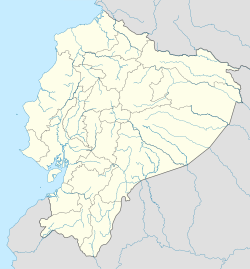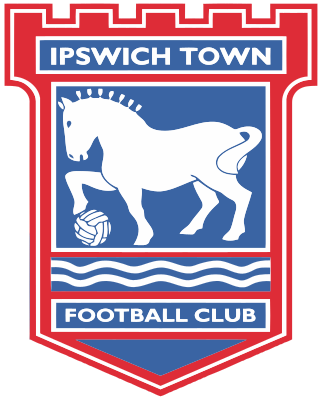
Ipswich Town Football Club is a professional football club in Ipswich, Suffolk, England, that competes in the Championship, the second tier of English football, following promotion from League One in the 2022–23 season.

The Battle of Pichincha took place on 24 May 1822, on the slopes of the Pichincha volcano, 3,500 meters above sea-level, right next to the city of Quito, in modern Ecuador.
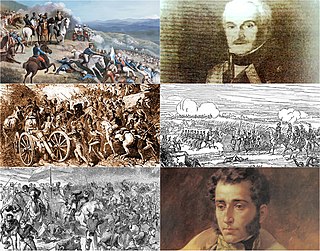
The Ecuadorian War of Independence, part of the Spanish American wars of independence of the early 19th century, was fought from 1820 to 1822 between Spain and several South American armies over control of the Real Audiencia of Quito, a Spanish colonial jurisdiction which later became the modern Republic of Ecuador. The war ended with the defeat of the Spanish forces at the Battle of Pichincha on May 24, 1822, which brought about the independence of all the lands of the Real Audiencia of Quito.

The Ecuadorian–Colombian War ,It was a series of armed conflicts waged between the current republics of Colombia and Ecuador between 1862 and 1863.

The Roman Catholic Metropolitan Archdiocese of Guayaquil is an archdiocese located in the city of Guayaquil in Ecuador.

The Ferrocarriles del Ecuador Empresa Pública is the national railway of Ecuador. The railway system was devised to connect the Pacific coast with the Andean highlands. After many decades of service the railway was severely damaged by heavy rainfall during the El Niño in 1997 and 1998 and from general neglect as the Pan-American Highway siphoned off passengers.
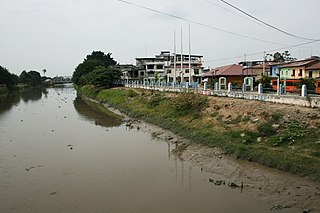
The Yaguachi River is a river of Ecuador.

Alfredo Baquerizo Moreno is a canton of the province of Guayas in the Republic of Ecuador. Its official name was given in honor of Alfredo Baquerizo Moreno, who served three times as the president of Ecuador. It is also known as Juján, a name which came from a regional plant. The canton covers an area of 228.6 square kilometres (88.3 sq mi). Its canton seat is also known as Alfredo Baquerizo Moreno or Juján.
Cañari and Puruhá are two poorly-attested extinct languages of the Marañón River basin in Ecuador that are difficult to classify. Puruhá is scarcely attested, and Cañari is known primarily from placenames. Loukotka (1968) suggests they may have been related to Mochica (Yunga) in a family called Chimuan, but Adelaar (2004:397) thinks it is more likely that they were Barbacoan languages.

Andean Baroque is an artistic movement that appeared in colonial Peru between 1680 and 1780. It is located geographically between Arequipa and Lake Titicaca in what is now Peru, where rules over the highlands and spreads over the entire altiplano. From the Portuguese word barrueco meaning impure, mottled, flamboyant, daring, the most striking example of Andean Baroque art is in religious architecture, where criollo and indigenous craftsmen together gave it a unique character, as happened in the New Spanish Baroque.
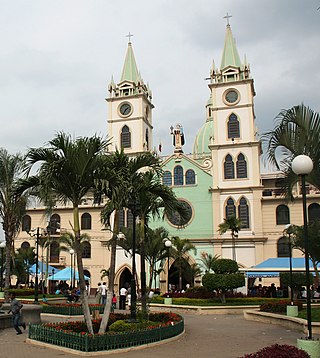
The Roman Catholic Diocese of San Jacinto is located in the town of Yaguachi, Ecuador. It is a suffragan see to the Archdiocese of Guayaquil.
Miss World Ecuador 2015, was the 3rd edition of the Miss World Ecuador that was held on August 1, 2015 where Virginia Limongi from Manabí crowned Camila Marañón from Manabí as her successor. The winner will compete at Miss World 2015.

The War of the Generals was a civil war fought in Ecuador from 1911 to 1912. Its causes laid in liberal opposition to the authoritarian reign of Eloy Alfaro. The revolt began on 28 December 1911. The decisive battle of the war was fought on 18 January 1912 at Yaguachi, where Alfaro was defeated and captured. Alfaro's body was publicly cremated on 28 January 1912. Total casualties on both sides numbered around 1500. Less than a year later, a new civil war would erupt in Ecuador, which would see the Esmeraldas Province rise up against the rule of Leónidas Plaza.

The Free Province of Guayaquil was a South American state that emerged between 1820 and 1822 with the independence of the province of Guayaquil from the Spanish monarchy. The free province had a provisional government and constitution until its annexation by Gran Colombia in 1822. Its successor was the Department of Guayaquil forming part of Gran Colombia.
The Spanish province of Guayaquil had been separated from the Viceroyalty of Peru and in those days it only depended legally on the court of the Real Audiencia de Quito. About a decade later, the Departments of Guayaquil, Azuay, and Ecuador separated from Gran Colombia forming the current Ecuador.

The October 9 Revolution was a successful revolt against the Spanish Empire in Guayaquil on October 9, 1820. It was led by the General Antonio José de Sucre and directed by Simón Bolívar. The revolt established a revolutionary junta and created the Free Province of Guayaquil, an independent state. The independence of Guayaquil revived the war of independence of the Real Audiencia de Quito as part of the Spanish American wars of independence. Prominent events in the revolution include the uprising of the Spanish garrison in the city of Guayaquil and the control of the Pacific by the Liberating Expedition of Peru, under the command of José de San Martín.
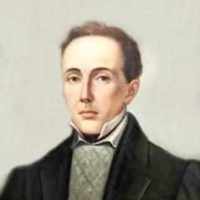
Francisco Eugenio Tamariz y Gordillo was a Spanish-born Ecuadorian politician and soldier who served as Ecuador's Minister of Finance from 1834 to 1836.

The Battle of Yaguachi or Battle of Cone was a military confrontation that occurred on 19 August 1821 between Guayaquil independence troops and Grancolombian reinforcements, led by Antonio José de Sucre, against Royalist troops led by Colonel Francisco González. The battle was fought near the city of Yaguachi, current Province of Guayas in Ecuador, and was a victory for the Patriots which ensured the definitive independence of the Free Province of Guayaquil.



